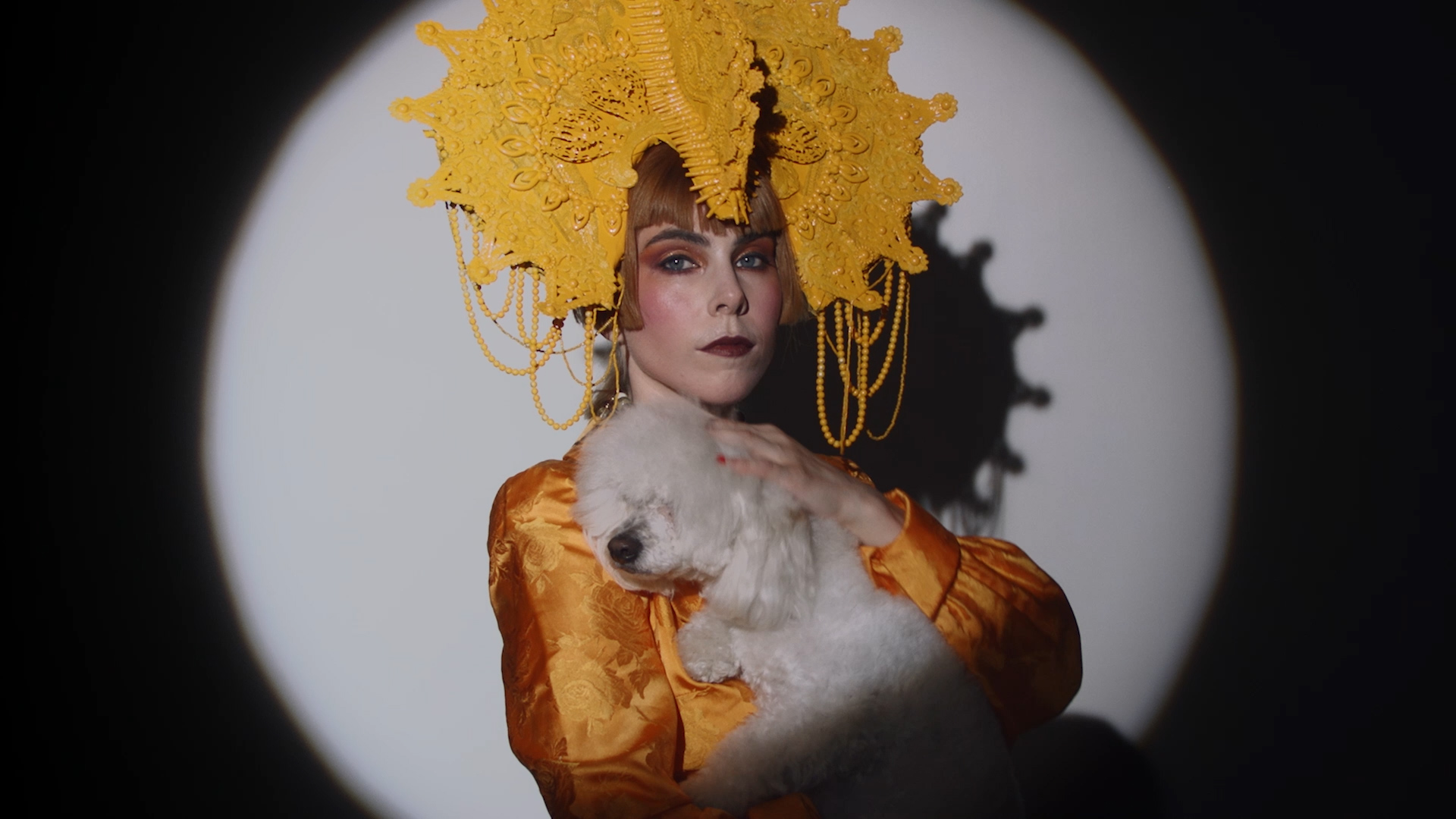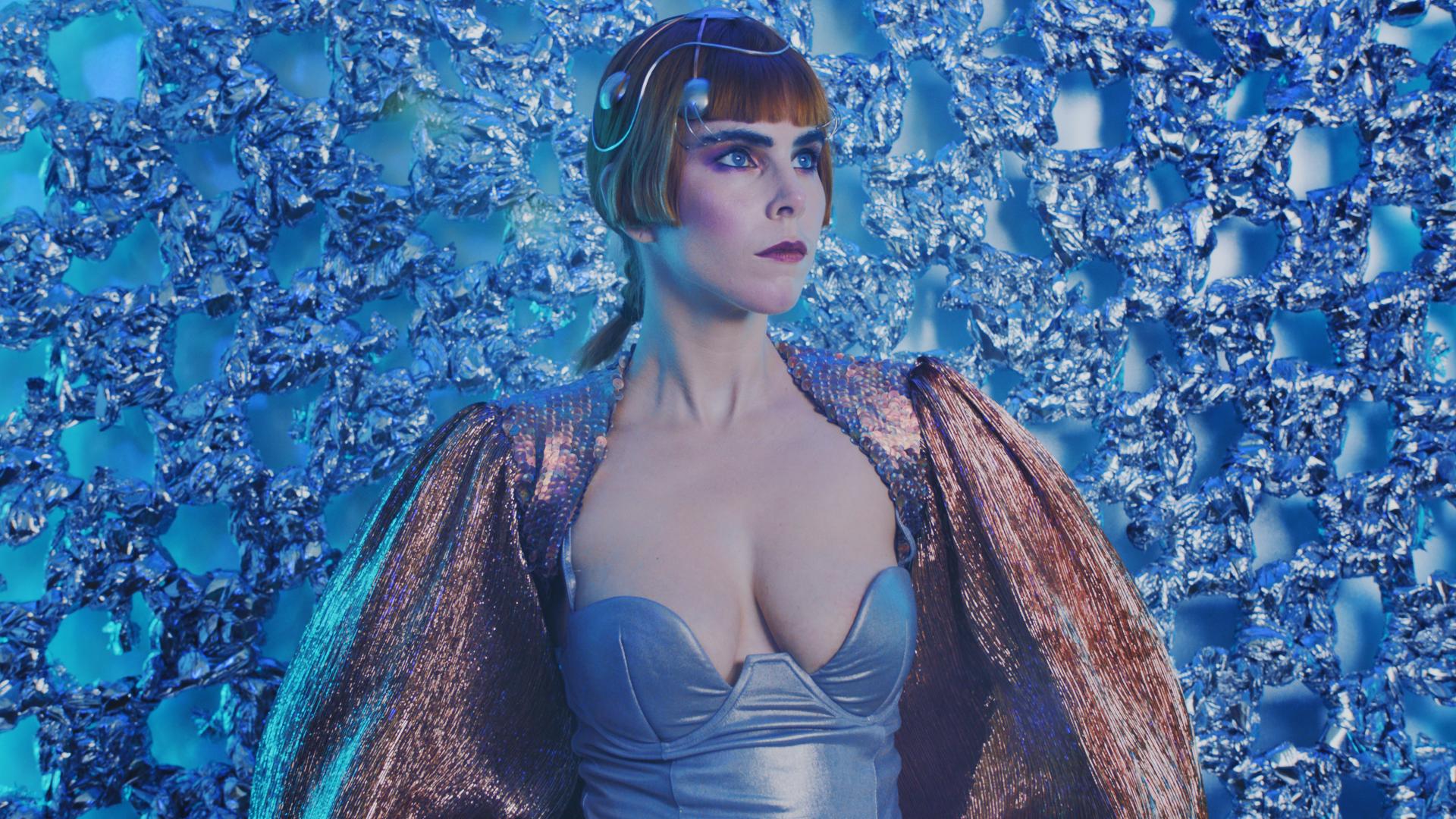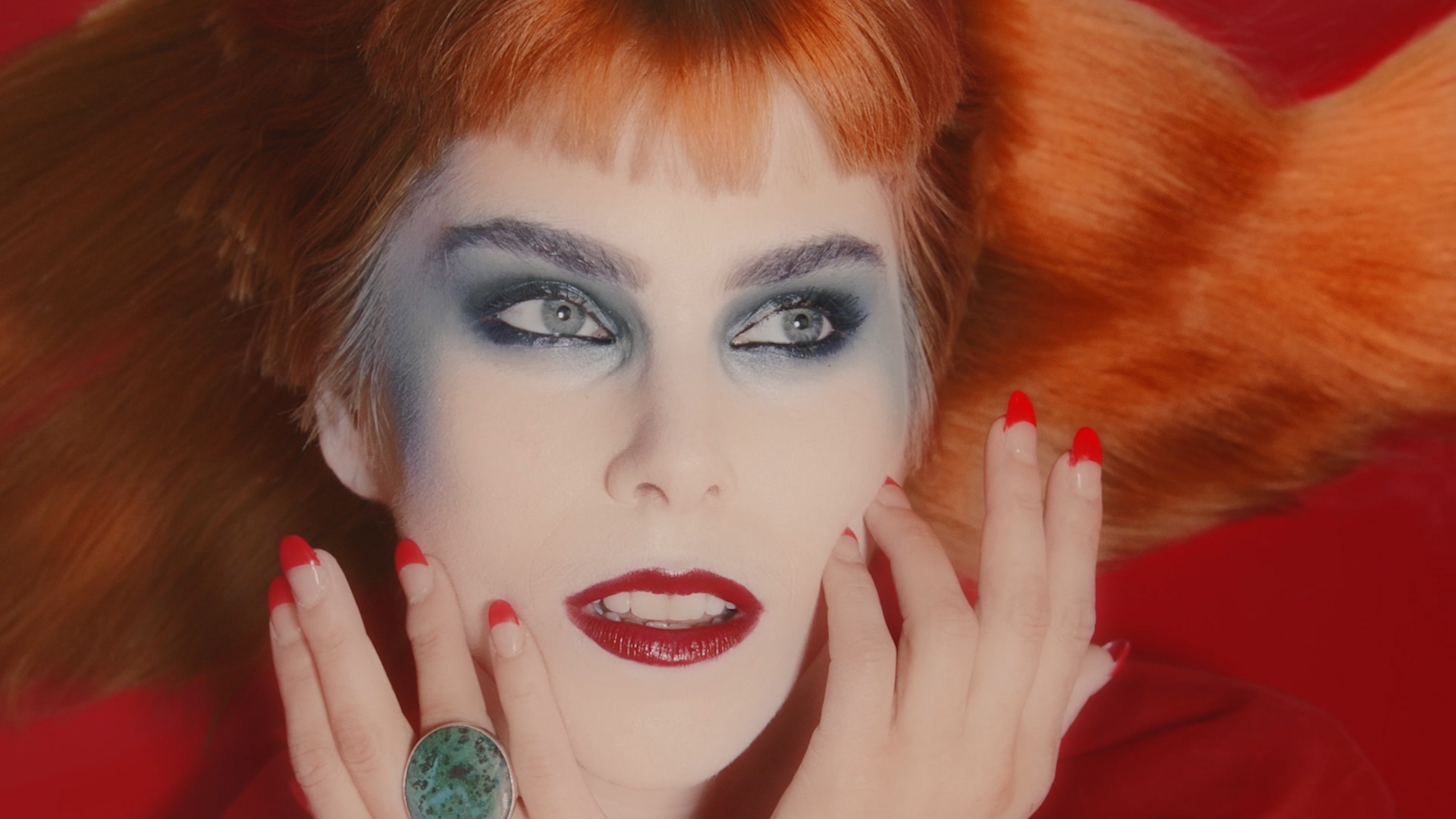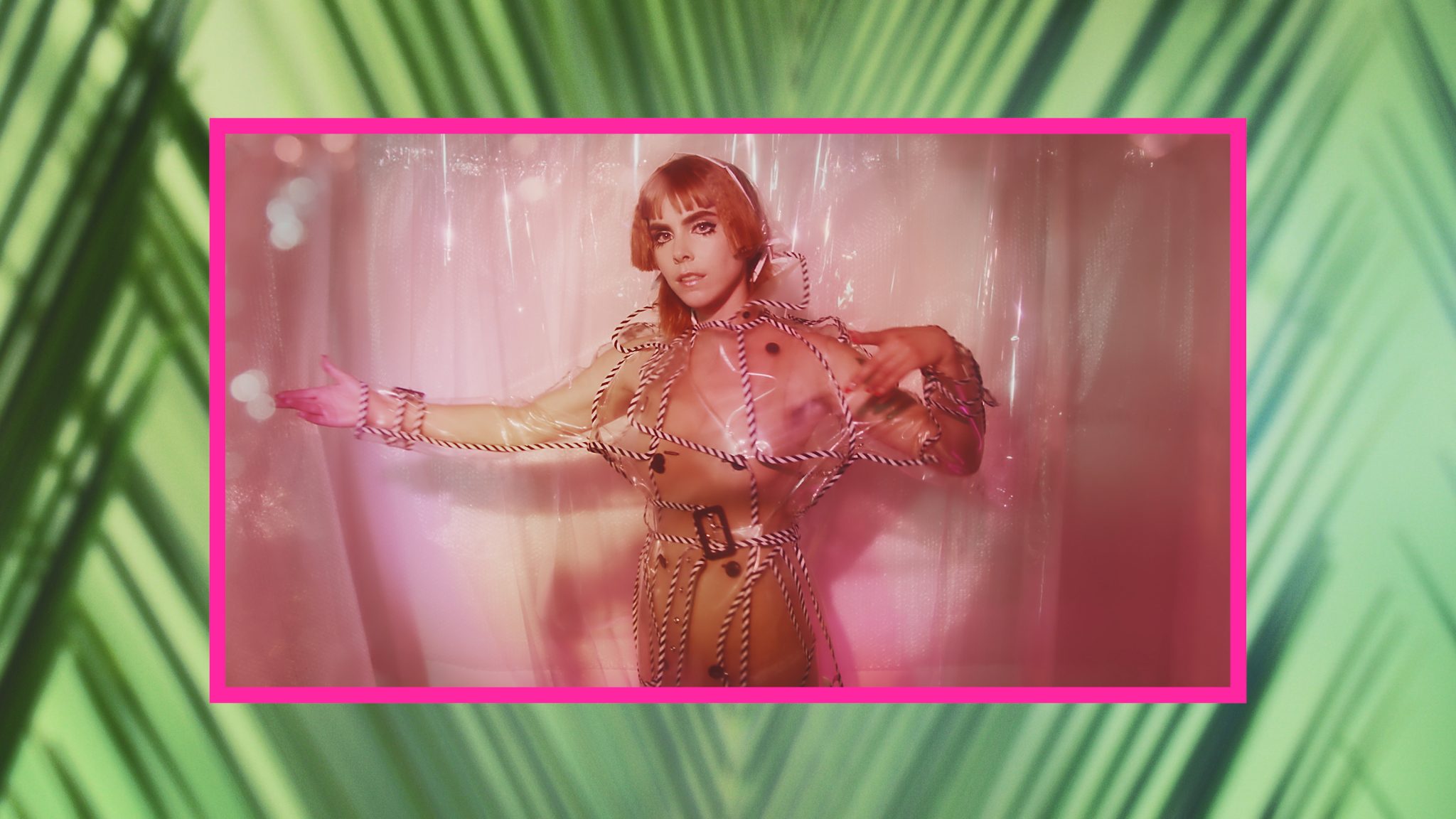Step Inside Ardis, the Latest from Ziemba
Visionary artist Rene Kladzyk has created a parallel world to hold a mirror up to our own.
Ziemba (née René Kladzyk) does not live in a bubble. The parallel world she created through her all-encompassing concept album, Ardis, is not a method of escapism, but rather a mechanism for evaluating the world we live in. She titled it “Ardis,” a reference to Nabokov’s Ada or Ardor. “Ardis is a place in that book, but he also discusses how an ‘ardis’ is the point of an arrow,” she explains, seated comfortably on the S.S. Vallejo, a houseboat in Sausalito where she’s currently doing an artist residency (former inhabitants include Agnès Varda and Alan Watts) before returning to NYC at the end of August. “It’s a useful philosophical tool for thinking about the way time moves, this point that’s a nexus in space time, an arrow shooting towards the future. I describe my Ardis as the pregnant present, like right now, but very full of all the possible futures.”
Ardis takes the form of a three-part album, a set of fragrances, and even a musical. Like Nabokov’s Ardis, Kladzyk’s Ardis is also a mythic place free of the restrictions in the real world. But it’s more of a thought experiment than it is a concrete narrative. “Mutatis mutandis is a theoretical device often used in law and philosophy, literally translating to ‘the necessary changes having been made.’ So that was the idea of Ardis, trying to envision what the Earth would look like, the necessary changes having been made,” said Kladzyk. Her own personal transformation of detaching herself from her own humanity played a crucial role in the process of creating Ardis. “A lot of the album is me interrogating my perspective as a human. It’s both me trying to envision this alternative reality, but also grappling with the limits of my own perspective.”
That being said, her own perspective is both singularly unique and omniscient, born in the wake of her own diverse experiences. After surviving a horrific car accident just before college graduation, Kladzyk found herself living under an almost oppressive fear, until a choir tour to Australia and New Zealand gave her the opportunity to conquer it. “When I was leaving, I thought ‘It’s okay if I die on this trip, but I’m going to conquer my fear!’” she remembered. “At the end of the trip, I went back to New Zealand by myself. I ended up doing a tour of the North Island led by a Maori healer. The night before we were going to go on this boat ride to this bay, the tour guide told me, ‘I see you’re carrying around all this negative stuff around with you. You don’t have to carry it anymore, I can help.’ And he held my hands, and looked into my eyes for a couple of minutes.” At the time, Kladzyk recalls feeling unmoved but calmed by the ritual. “The next day I went on this boat ride all the way out to the ocean, and they were like, ‘There might be an opportunity for all of you to swim with dolphins, if you want to, on this ride,’” she continued. “I’m not an incredibly strong swimmer, but I put on a wet suit. I kept diving under looking for the dolphins, and at one point, I dove under, looked down, and beneath me there were two dolphins swimming on their sides, just gliding and smiling at me. I remember looking into their eyes and thinking, ‘This is why. This is why you can’t make choices based on fear.’”
And while being liberated from her own anxieties, the 2016 election is the largest catalyst of the project. “I started gravitating towards science fiction as a tool for creativity after Trump got elected, because it felt like a positive and helpful lens for thinking about our times.” As the media relentlessly spewed doomsday headlines, Kladzyk did the opposite. “I encounter so much pop culture that’s very nihilistic. The underlying outlook on everything is that we’re all fucked. If I’m going to make creative work, I want it to be part of what’s uplifting and invigorating people, motivating them to be their best selves.” Her battle cry for positivity in the face of the apocalypse did not go unappreciated by her fans, one in particular who caught her attention after a show. “They were like, ‘I felt like you were the last human on earth, sending out an SOS call to the universe, and it broke my heart, but it was so beautiful.’ I would’ve never thought of that sort of visual or that feeling, but them telling me that was so perfect.”
Despite being a politically driven project, Ardis does not have didactic overtones. Her philosophy is that creating political art is somewhat inevitable. “All art is situated within politics in some way. The politics of the art world, of the music industry, are really, really messed up. And it’s frustrating and difficult to engage with them. It’s hard to be a creative person in America. I mean the marginalization of women, P.O.C., and queer people is really pervasive.”
Kladzyk became acutely sensitive to the injustices in the music industry during the formation of Ardis. “When I was making Ardis, I was doing research on record labels and I was pretty stunned when I realized how disproportionately they were all run by men. It’s like their taste is the only taste that counts. I’ve been compiling a list of music industry organizations who have women and nonbinary people in leadership. I’m trying to share it as much as possible, to help uplift women and nonbinary led organizations.
And while it lacks the intimate intensity of her past projects, Ardis still has a semblance of her personality, with many of her close friends collaborating on the album and music videos. “Shooting the Lips 2 Lips music video was the most fun thing I could imagine doing. It was just being in a room with 20 of my friends acting out an insane banquet scene and snuggling with each other and being cute.” She hoped that this sense of joy would touch the audience as well. “That’s a goal, for that to ripple out,” she stated wistfully. “Ardis is designed to be really fun to experience.” Another friend, Malicia Dominguez, crafted the art for Ardis, and two of Kladzyk’s favorite designers,, Merritt Meacham and BCALLA, put together a number of the Ardis costumes.
Her decision to pursue a more inclusive, creative route has served her well. “On some level, I think my voice is important because other people have told me they found it to be important. I don’t think I would continue doing the work that I’ve been doing if I wasn’t getting feedback that it matters to people. I definitely don’t want to be creating things in a bubble,” she declared. I don’t know if transcend is the right word, but I believe art really matters, that it shapes culture. Artists can help to push our culture in a positive direction, and that’s my goal.”




